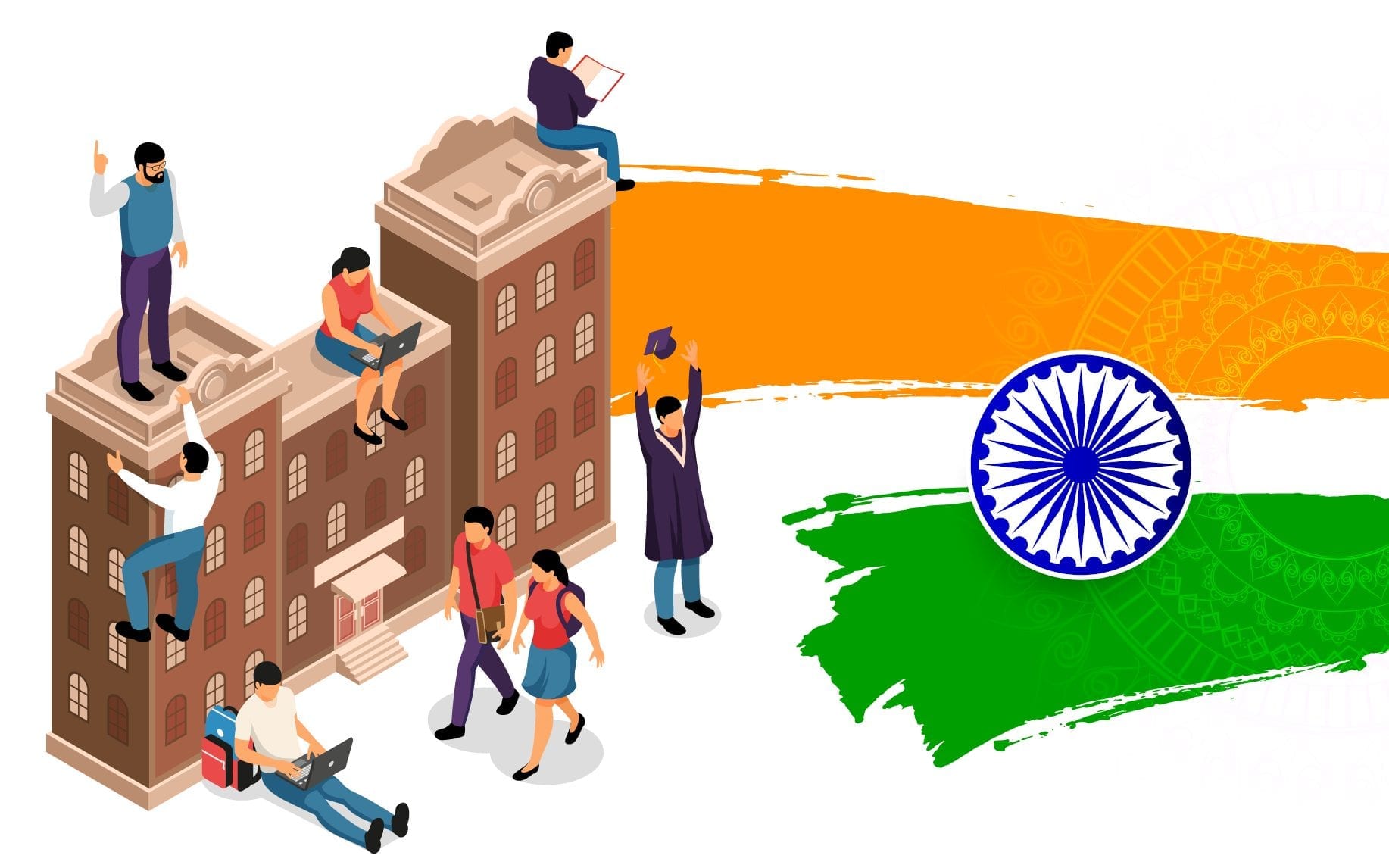Ahmedabad
(Head Office)Address : 506, 3rd EYE THREE (III), Opp. Induben Khakhrawala, Girish Cold Drink Cross Road, CG Road, Navrangpura, Ahmedabad, 380009.
Mobile : 8469231587 / 9586028957
Telephone : 079-40098991
E-mail: dics.upsc@gmail.com

News: Recently, a 33-year-old Ad-hoc professor in Delhi University committed suicide which highlights the case of problems persistent in recruitment system in country’s higher education institutions.
In this context it is important to study about Higher education in India, government schemes to promote it and challenges faced.
Ad-hoc officers are teacher’s appointed in universities. Though, they are expected to perform the same duties as the permanent faculty, the ad-hoc lecturers are not eligible for benefits such as gratuity, pensions and medical allowances.
Higher education or the tertiary education, is an optional final stage of learning that occurs after completing secondary education in India. In simple words, education after Class 12th constitutes Higher education.
o It creates better job prospects, helps build valuable connections with outside world
o With better job prospects it leads to enhanced standard of living
o Personality development
o Higher education helps create future leaders through training in professional domains
o Technological advancement. Rise of startups, entrepreneurs and new age technologies.
The government has taken steps to improve research, financing, quality and to increase participation of women in Higher education institutes (HEIs) in India.
o Higher education financing Agency (HEFA) – A JV of Ministry of Education and Canara Banks, it leverages funds from market, donation, CSR activities which are used to finance improvement in infrastructure in top institutions.
o Institution of Eminence Scheme (IoE) – Selected institutions in public and private sector will be declared as IoE and receive 1000 crore in donation in next 5 years.
o PARAMARSH scheme which mentors institutions seeking NAAC accreditation.
o Beginning of National Institutional Ranking Framework (NIRF) which ranks higher education institutions in India to encourage institutes to compete against each other and improve growth prospects.
o Foreign Higher Education Institutes were recently given permission to setup their campuses in India. Australia’s Deakin University will be amongst first to join.
o SWAYAM – India’s own MOOC platform which offers free online learning courses
o SWAYAM PRABHA
o IMPacting Research Innovation and Technology (IMPRINT) India – It is pan-IIT and IISc joint collaboration to develop a blueprint for research of immediate relevance to society requiring innovation, direct scientific research into identified areas, ensure higher funding support for research into these areas and measure outcomes of the research efforts with reference to the impact on the standard of living in rural/urban areas.
o Uchhatar Avishkar Yojana - promoting innovation of a higher order that directly impacts the needs of the Industry and thereby improves the competitive edge of Indian manufacturing.
o Impactful Policy Research in Social Science (IMPRESS) – To promote social science research in higher education institutions and to enable research to guide policy making.
KIRAN scheme, Women Scientists Scheme, Consolidation of University research for innovation excellence in Women universities (CURIE) to enhance participation of women in STEM field.
o It is 27.3 for age group 18-23 years based on 2011 population. In USA, the GER is 88.2%, China 49.1%.
o The NEP-2020 envisages Gross Enrollment Ratio (GER) to reach GER of 50% by 2030. Inadequate Infrastructure
o Apart from Top educational institutes, most of colleges and universities in India lack basic facilities – Technical labs, libraries, hostels, research equipment’s.
o According to data presented by Education ministry in Parliament this March, more than 6,000 teaching positions are currently vacant across the country’s central universities.
o Faculty shortages and high Student-to-faculty ration
o Inability of HEI’s to attract and retain well qualified teachers due to factors such as ad-hocism, lack of merit based career progression, poor teacher education institutions (TEIs)
o Rise of private ownership and management of educational institutions
o Lack of focus on ethical and value-based education, lowered standards and quality of educations.
o Over-centralization and rigid bureaucratic strucutres of regulatory system
o Multiple regulatory institutions with overlapping roles and functions make system complex. Eg – UGC, AICTE
o The NEP 2020 has suggested reformative approach to address the challenges faced by HEI’s in India. The suggestions addresses issues at structural, regulatory levels and provide steps to promote equity and inclusion.
o It also underscores the need to curb commercialization of education and recommends promoting Indian languages in HEI’s. Suggestions of NEP 2020 need to be implemented in letter and spirit.

Address : 506, 3rd EYE THREE (III), Opp. Induben Khakhrawala, Girish Cold Drink Cross Road, CG Road, Navrangpura, Ahmedabad, 380009.
Mobile : 8469231587 / 9586028957
Telephone : 079-40098991
E-mail: dics.upsc@gmail.com
Address: A-306, The Landmark, Urjanagar-1, Opp. Spicy Street, Kudasan – Por Road, Kudasan, Gandhinagar – 382421
Mobile : 9723832444 / 9723932444
E-mail: dics.gnagar@gmail.com
Address: 2nd Floor, 9 Shivali Society, L&T Circle, opp. Ratri Bazar, Karelibaugh, Vadodara, 390018
Mobile : 9725692037 / 9725692054
E-mail: dics.vadodara@gmail.com
Address: 403, Raj Victoria, Opp. Pal Walkway, Near Galaxy Circle, Pal, Surat-394510
Mobile : 8401031583 / 8401031587
E-mail: dics.surat@gmail.com
Address: 303,305 K 158 Complex Above Magson, Sindhubhavan Road Ahmedabad-380059
Mobile : 9974751177 / 8469231587
E-mail: dicssbr@gmail.com
Address: 57/17, 2nd Floor, Old Rajinder Nagar Market, Bada Bazaar Marg, Delhi-60
Mobile : 9104830862 / 9104830865
E-mail: dics.newdelhi@gmail.com